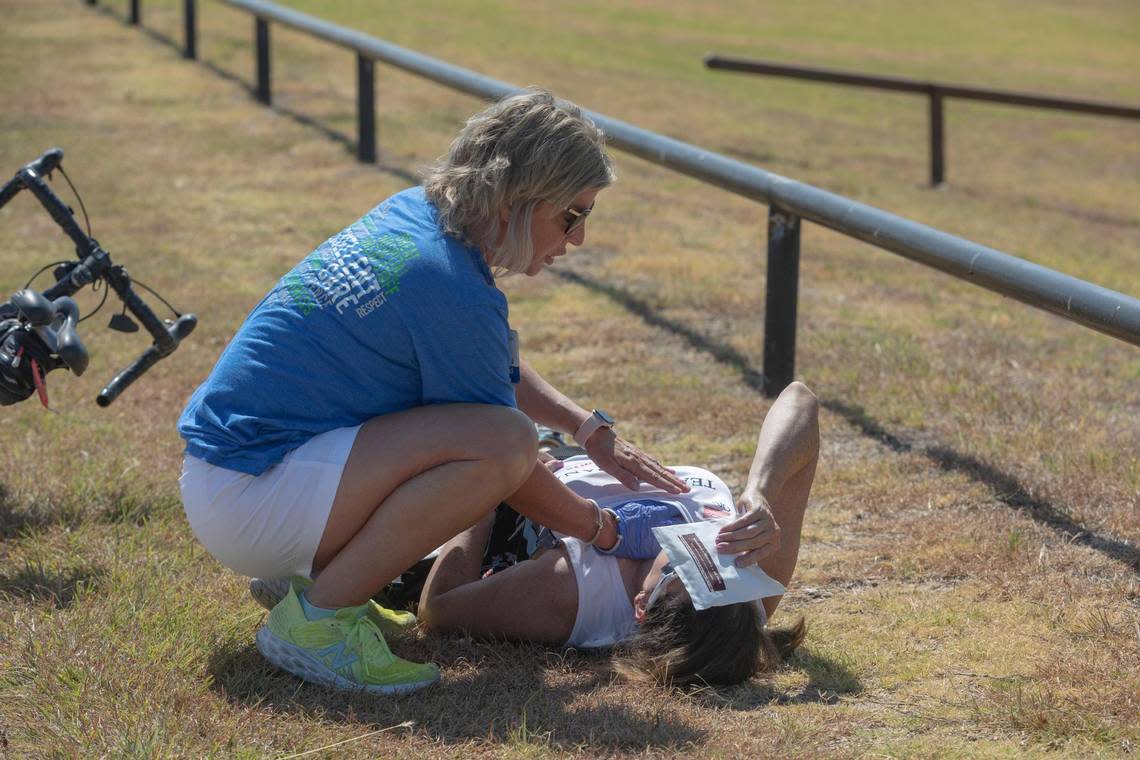From recess to sports, here’s how to keep your child safe in triple-digit Texas heat
As students gear up for school in Tarrant County, over 100 degree days persist with heat advisories continuing to be issued by the National Weather Service each week.
This year MedStar responded to a total of 667 heat-related patients between May 1 to August 3, an increase of 346 cases from the same time last year.
Texas Health continues to receive hundreds of heat-related patients this summer, with 169 cases in June and 277 cases in July.
June, July and August are typically when emergency departments see the most heat-related illnesses in Texas.
From football practice to band to recess, here are tips to keep your student safe from heat-related illnesses as school starts this August.
How long can my student be out in the heat?
Texas Health officials said heat illness can occur within 20-30 minutes depending on the conditions and level of activity. Heat stroke, the most serious heat related illness, occurs when body temperature rises to 106 degrees or higher within 10 to 15 minutes, according to the Centers for Disease Control and Prevention.
Dr. Andrew Morris, associate medical director of emergency medicine at Texas Health Presbyterian Hospital Plano, said being dehydrated, not well conditioned for an activity or having an infection can make otherwise healthy people prone to heat-related illnesses.
When students start to feel ill in the heat, they need to tell someone and move to the shade or an air-conditioned space. Younger students need adult supervision while in the heat and to be encouraged to drink more fluids even when they are not thirsty.
Because high temperatures, humidity and excessive sweating can be dangerous, athletes must hydrate before their activities, Morris said.

Know the difference: Heat exhaustion vs. heat stroke
Heat exhaustion is when the body loses large amounts of water and salt through excessive sweating, particularly through hard physical labor or exercise. Symptoms include muscle cramps, paleness, sweating, nausea and vomiting. According to MedStar, children and the elderly are especially susceptible.
If you or someone you know experiences heat exhaustion, the National Weather Service advises moving to a cooler area, loosening clothing and drinking cool water. If symptoms don’t improve, seek medical attention.
A heat stroke is when the body suffers from long, intense exposure to heat and loses its ability to cool itself. This is a life-threatening problem. According to MedStar, common signs of heat stroke include confusion, vomiting, alteration in sweating, hot and flushed skin, rapid heart rate, decreased sweating, shortness of breath, decreased urination, increased body temperature or even convulsions.
Heat stroke is a medical emergency — if you or someone you know starts experiencing heat stroke symptoms, immediately call 911.
What are ways to keep my student safe during outdoor activities?
Whether it’s sports or recess, here are some safety tips from Texas Health officials.
Never participate in activities in the heat alone.
Hydrate with 10-16 ounces of water about 30 minutes before starting outdoor activities.
Wear light colored, breathable clothing.
If you start to feel sick when out in the heat, get somewhere cool and hydrate.
Protect skin with a hat, sunscreen and sunglasses.
During outdoor practices, students should drink at least 4-8 ounces of water every 20 minutes. During activities longer than about an hour or with excessive sweating, add a sports drink to help replace electrolytes. Rehydrate after practice.
